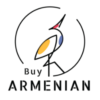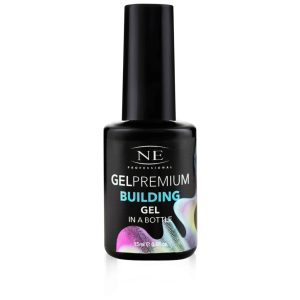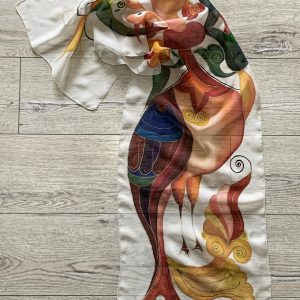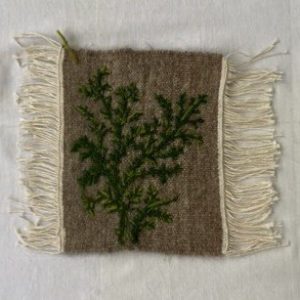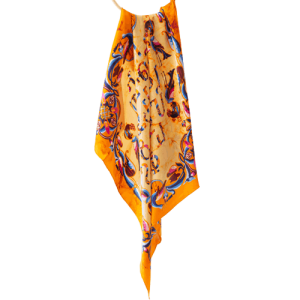-
Decolorized Iodine
Decolorized iodine, also known as colorless or white iodine, has a wide variety of applications and boasts remarkable benefits.
Antiseptic: Like the traditional orange-brown iodine, white iodine can be used as an antiseptic applied topically. Unlike traditional iodine, it will not stain skin or clothes. Put two to three drops of white iodine on a cotton ball and apply to cuts and burns to ward off infection.Nail Treatment: Our white iodine can be used to improve weak, brittle fingernails. It is applied on the tip of the nail (not the nail bed) and the underside of the nail tip. Improvement typically appears after one to two weeks.
Hair Treatment: Our white iodine can be used topically as a treatment for alopecia areata, a condition associated with hair loss. Apply white iodine once a day to the affected area. Results typically appear within two to six weeks.
Nutritional Supplement: Iodine is essential to human biology and can be provided only through diet. Our food grade white iodine is used as a dietary supplement to regulate metabolism and treat thyroid deficiencies by stimulating the production of T3 (triiodothyronine) and T4 (thyroxine) hormones. Symptoms of iodine deficiency are weight gain, sensitivity to temperature changes and sluggishness.
Enjoy the goodness of colorless iodine made in Armenia by Go Green Armenia!$4.75 – $25.00Decolorized Iodine
$4.75 – $25.00 -
”Cotton Candy” Dress
Short pink sequin dress with a detachable tulle skirt
bust 90 CM
waist 72 CM
hips 102 CM
detachable skirt length 125 CM$250.00”Cotton Candy” Dress
$250.00 -
Building Nail Gel
There is no need to use different brushes and several jars for building the desired gel nails. NE Building Gel in a Bottle is an All-in-One formula, which gives the opportunity to save huge amounts of time and resources and still get the perfect result.
$12.80Building Nail Gel
$12.80 -
Knitted Bear Doll
Teddy bear made of acrylic yarn for children does not cause allergies.
$20.00Knitted Bear Doll
$20.00 -
-
Ղ. Աղայան. Անահիտ
Ականավոր հայ մանկագիր Ղ. Աղայանի «Անահիտ» հանրահայտ հեքիաթը մի իսկական ձոն է արհեստին և ազնիվ աշխատանքին: Անահիտի և Վաչագանի սիրո պատմությունն է, որը գորգագործության արհեստի ուժով պայքարեց չարի, տգիտության դեմ՝ արարելով խաղաղություն, բարեկեցություն և սեր ամենուր: Չքնաղ Անահիտի սկզբունքային, աշխատասեր կերպարը, կարծես անհատականցնում է հայ ժողովրդին՝ իր տոկուն պայքարով հանուն ազատության, սիրո ու մշակույթի:
$2.00Ղ. Աղայան. Անահիտ
$2.00 -
Decorated Teabox
This wooden Teabox is decorated with red pomegranates, grapes and high quality beads and crystals. The golden leaves and the red pomegranates are made of engraved metal and the whole artwork is covered by a thick layer of transparent resin that protects from dust and gives it a shiny surface . Inside the Teabox , the box is divided into 4 equal partitions suitable for your teabags.
Processing time is 7 days
$55.00Decorated Teabox
$55.00 -
“Armenian Letters” Silk Scarf
Silk Scarf Pomegranates
Size ՝ 1.40 * 45cm
$60.00 -
Green Shoots Embroidered Kilim
A souvenir kilim embroidered in Garni with naturally dyed wool. The kilim can be used as a decorative wall hanging or table mat.
Dimensions: 22cm x 18cm
Processing time: 1 week
$30.00 -
-
“Armenian Alphabet” Scarf
The Armenian alphabet was created in 405 AD.
One of the greatest marks of the Armenian identity is the Armenian language. The exact origins of the Armenian language, however, are a little bit obscure. Such is the case with many ancient languages. Serious scholarship starting from the 19th century has placed Armenian among the wider family of Indo-European languages, although it forms its own separate branch within that group. So the language does not have any close relatives today, even Indo-European ones, such as Spanish and Portuguese or Russian and Polish might be considered.Armenian is also unique in its writing system. The Armenians use their own alphabet which was, by tradition, created following the studies and meditations of a monk, Mesrop Mashtots, in the early 5th century AD. Christianity had already been accepted as the national religion for a hundred years in Armenia, but the Bible was not yet available in the native language. The tradition goes that the main motivation to come up with a separate Armenian alphabet was in order to translate the Bible in such a way that would be accessible and suitable for the language and the people.
Mesrop Mashtots – who has since been venerated as a saint, as the patron of teaching and learning for Armenians – accomplished the task in the year 405 AD, thus setting the stage for a rich trove of works of religion and history, science and philosophy, illuminated manuscripts, and published books in the millennium and a half that followed, continuing on today. A major road in the capital of Armenia, Yerevan, is named for Mashtots, and one end of it is the apt location for the Matenadaran, the national repository of manuscripts which also functions as a research institute and museum.
$110.00
